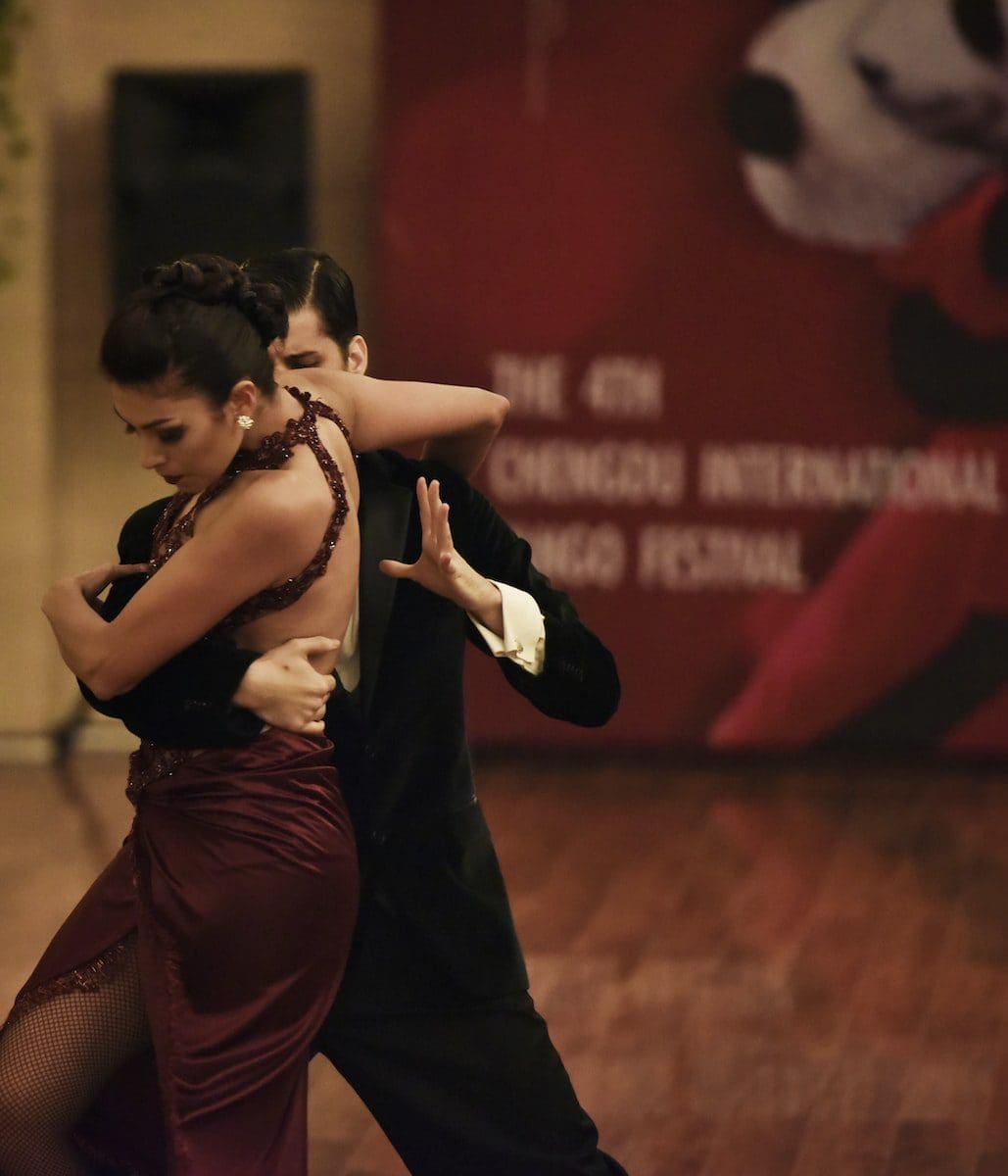The round dance is a cued ballroom and a choreographed dance. In this, dancers move in a circular manner around the dance floor.
The pattern in which they move is the counterclockwise pattern. The fashion of round dance is an example of social dance, it includes hustle, mambo, jive, salsa, swing, tango, and many more.
Among them, jive and swing dance are quite popular for their steps which are performed in dance competitions all over the world. The steps of both dances are linked with each other. But still, there is a distinction between them.
Key Takeaways
- Jive is a fast-paced, lively dance style that originated in the United States. At the same time, Swing is an umbrella term for various dance styles sharing common roots in jazz and African-American musical traditions.
- Its bouncy rhythm, and energetic moves characterize Jive, while Swing encompasses a range of dance styles with varying tempos and movements.
- Swing dances include the Lindy Hop, East Coast Swing, and West Coast Swing, while Jive is a specific style within the Swing dance family.
Jive vs Swing
Jive is a spirited and upbeat dance originating from the United States. The dance is performed with high energy to a fast paced music and tempo. It is characterised by knee-lifting, bending, twirling, kicks and hip-sway. Swing dance is lively that give the dancers more room for creativity. It is characterised by spins and flips to jazz music.

Jive is an inhibited variation of the dance to jitterbug. In the international Latin dance, it is among five of them. In the United Kingdom, this term became a generic term for swing.
In the dance competition of international style ballroom, it is danced to western music but grouped with Latin dances.
Swing dance is a social dance form that originated in the 1940s. It includes extreme athletic moves in the performance version. In the US, it is dance to swing music.
There is distinct regional variation in the dance steps, including forms like the South shag, the east jitterbug, Lindy, the west coast swing, and the whip and the push in Texas.
Comparison Table
| Parameters of Comparison | Jive | Swing |
|---|---|---|
| Birth year | The 1930s | The 1920s |
| Origin | Europe | America |
| Speed | Faster | Slower |
| Steps travel | Less | More |
| Tempo | 35-45 measures per minute | 25-35 measures per minute |
What is Jive?
Jive was introduced in the early 1930s in the United States (African Americans). The name of this dance comes from the vernacular slang of African-Americans.
This slang was from the dictionary publication by Cab Calloway and popularized in the 1930s. In the 1930s and 1940s, the players of swing music consider jive as an expression denoting foolish or glib talk.
Jive is a boppy, happy, energetic dance, with several bending, knee lifting, and rocking of the hips. Jive Incorporates plenty of flicks and kicks, twirling of the woman, but it does not move around the floor compared to other dances.
Jive dancers keep their knees close together, and their feet are well-controlled under the body.
Jive shares many figures, music styles, and tempos with East Coast swing. Jive consists of a rock step and two triple steps. It consists of a rock step and two triple steps.
The rock step is counted as “1,2” while “3 and 4” and “5 and 6” are counted as two triple steps. It is more energetic, with the pumping portrayed by the legs.
Based on the style, jive can be danced on various upbeat music like swing, rock and roll, and boogie-woogie. The most important thing to keep in mind for the beginner is to be familiar with the music’s rhythm.
The drum provides the beat, so it is better to listen to the drumline.

What is Swing?
Swing dance is one of the styles of social dance in which a dancer spins, flips, and lifts his or her partner. Swing dance is one of the favourite dances for social dancers of all ages.
It is much easier to spot swing dance because it is fun, and dancers have the biggest smiles.
Swing dance has lots of flipping, throwing, and swinging dancers. Due to its non-progressive style, it is performed in one spot and is popular on a crowded dance floor.
Swing is a fast-paced, quick dance. Swing dance requires practice, but after learning the steps thoroughly, dancers never want to stop swinging.
There is no swing music, but there is music that swings. Just like the swing dance varies, its music does the same. Swing music may include styles like hip-hop, blues, jazz, funk, ragtime, and pop.
The famous music of the time heavily influenced the swing dance styles.
The swing dance has a variety of partner dances, including jitterbug, Caroline shag, East Coast Swing, Lindy hop, jive, West Coast swing, and boogie-woogie.
In this kind of dance, dancers are allowed to add their expression and style. Swing is full of energetic and lots of fun dance styles.

Main Differences Between Jive and Swing
- Jive is bouncy, up-and-down, and peppy in place. On the other hand, the swing is lazy and easygoing. In this, dancers swing apart and together.
- The timing of the chasse is different because in Jive, “1” is taken quicker beat compared to swing. In swing, the beat is split more evenly and dance “1 and, 2” with each taking ½ beat as “1” and the “and”.
- The time rhythm of jive music is 4/4, with the beats counting mainly six of two triple steps and rock steps. But swing dance is a beat count of six or eight.
- In jive, steps changes without leaving room for the interpretation of music. On the flip side, swing dance has smooth synchronization, allowing breaks and music interpretation.
- In jive, dancers travel less due to more dance under the body compared to swing. In jive, chasse with step/step, side (1 ah, 2). In swing, chasse with close/side, side (1 and 2).

- https://www.ncbi.nlm.nih.gov/pmc/articles/pmc3671601/
- http://sutlib2.sut.ac.th/sut_contents/H120065.pdf

Interesting read! This article perfectly sums up the key differences between Jive and Swing, helping readers understand their unique styles and origins. I particularly enjoyed the detailed comparison table.
This article provides a comprehensive and detailed comparison of Jive and Swing dancing, shedding light on their origin, characteristics, and differences. It’s a great source of information for anyone interested in ballroom dancing.
While the article provides a detailed comparison of Jive and Swing, it lacks a critical analysis of the cultural and historical significance of these dances. A deeper exploration of their impact on society and music would enhance the reader’s understanding.
While the article effectively elucidates the differences between Jive and Swing dances, its informative yet engaging tone captivates readers, making it an enjoyable and educational read for enthusiasts and dancers alike.
The detailed breakdown of Jive and Swing dances in this article is highly informative, offering a comprehensive understanding of their individual traits and historical origins. A commendable piece of scholarly work!
The article offers a well-structured and informative comparison of Jive and Swing, providing valuable insights into their unique characteristics and dance styles. It’s a great resource for enthusiasts and beginners alike.
The comparison between Jive and Swing is well-explained and thorough. However, it would have been beneficial to include more visual aids, such as images or videos of the dances, to further complement the detailed descriptions.
This article meticulously dissects the differences between Jive and Swing, offering valuable insights into their rhythmic patterns, origins, and distinct dance styles. It’s a well-researched and informative piece.